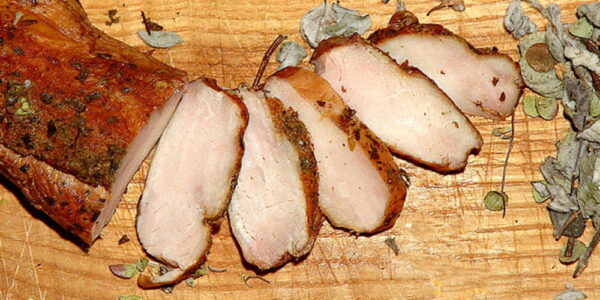Apáki: A Culinary Treasure of Crete
Apáki is a traditional Cretan cured meat with roots that trace back to Byzantine times. This delicacy is prepared primarily from lean pork, which is cut into strips, marinated in vinegar, and seasoned with the island’s aromatic herbs—such as thyme, oregano, bay leaf, and rosemary.
After marination, the meat is smoked using olive or vine wood and then left to mature. The result is a lean, firm, and wonderfully aromatic cured meat with a distinct smoky character.
Flavour and Tradition
Apáki represents the finest of flavorful cold cuts. It is especially cherished as a meze alongside tsipouro or raki, though its appeal goes far beyond. Its smoky taste, the fragrance of Cretan herbs, and its low-fat texture give every dish a unique depth without heaviness.
The tradition of preparing apáki is deeply rooted in the village of Anogia in Crete. Villagers, motivated by the need to preserve large quantities of meat, developed this method centuries ago. The process is a harmonious blend of practical necessity and the island’s rich flora, which infuses the meat with its unique flavour.
Nutritional Qualities
- Rich in protein, yet lower in fat compared to many other cured meats.
- Traditionally preservative-free, relying solely on natural ingredients.
- Intense in flavor, making it enjoyable in small, satisfying portions.
Ways to Enjoy Apáki
Apáki is remarkably versatile in the kitchen:
- Served plain or slightly warmed, it pairs perfectly with good wine or raki.
- It enriches soups, legumes, and classic Cretan “ladera” dishes.
- It adds depth to dishes such as tigania, pasta sauces, pizzas, salads, and omelettes.
Whether enjoyed as a simple meze or as a key ingredient in traditional and modern recipes, apáki is more than just cured meat—it is a culinary expression of Crete’s history, landscape, and flavours.




